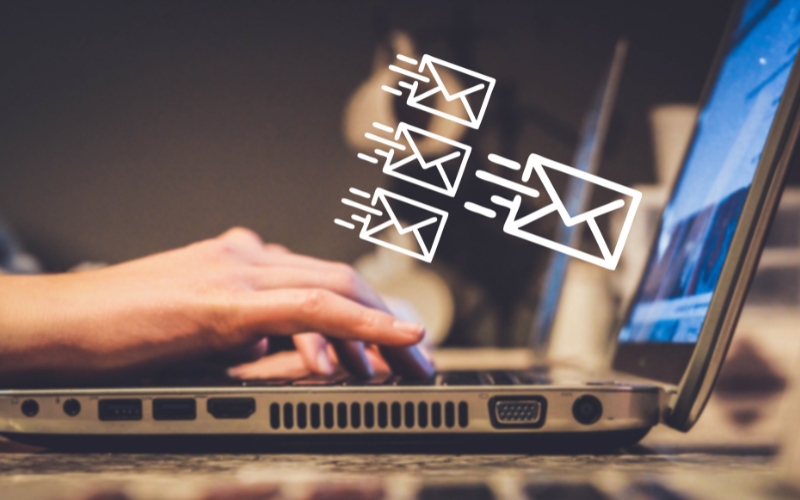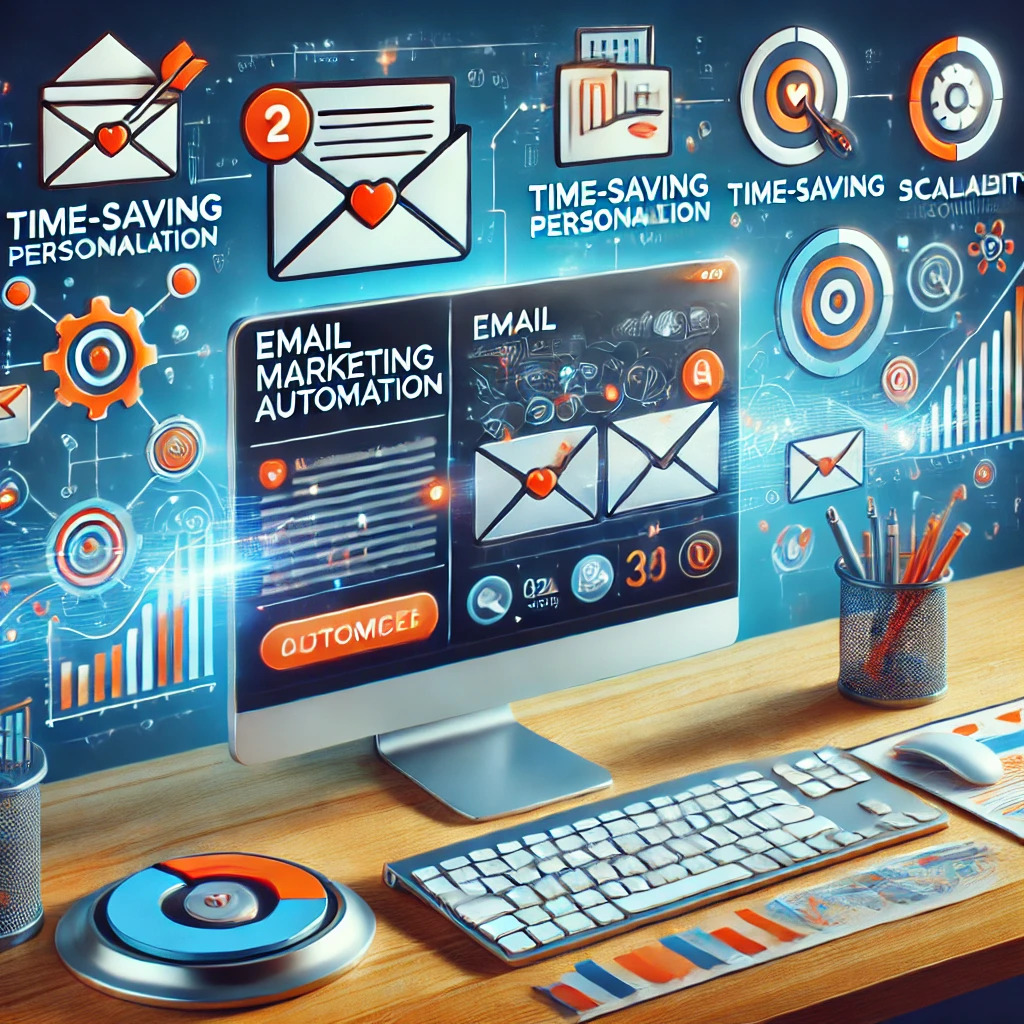Email marketing automation is a powerful tool that allows businesses to streamline their communication with customers while maintaining a personalized touch. By automating various aspects of email campaigns, businesses can save time, enhance engagement, and improve overall efficiency. From welcome emails and drip campaigns to re-engagement strategies, automated emails help businesses nurture relationships and guide leads through the sales funnel. However, to maximize the impact of email marketing automation, it’s essential to understand how it works, explore the types of automated campaigns, and follow best practices for implementation. This article delves into the fundamentals of email marketing automation, its various types, and tips for ensuring its success.
Understanding the Basics of Email Marketing Automation

Email marketing automation is a powerful strategy that enables businesses to send personalized, timely, and relevant emails to their audience without manual effort. It involves using software tools to automate the process of sending emails, allowing businesses to communicate with their customers at the right time based on user actions, behaviors, or predefined schedules. This technology takes the manual work out of email campaigns, helping businesses maintain a consistent and targeted approach to their communications.
What Email Marketing Automation Is and How It Works
Email marketing automation works by automating various email tasks, such as sending welcome emails, promotional offers, and customer follow-ups, based on triggers or actions taken by the customer. For example, when a new subscriber joins a mailing list, they can automatically receive a welcome email. Similarly, if a customer abandons their shopping cart, an automated reminder can be sent encouraging them to complete the purchase.
The system behind email marketing automation uses workflows—pre-programmed sequences that dictate when, why, and how emails are sent. These workflows can be set up to respond to actions like subscribing to a newsletter, clicking on a particular product, or completing a transaction. The goal is to send the right message to the right person at the right time, providing a personalized experience that drives customer engagement.
Key Benefits: Time-Saving, Personalization, and Scalability
One of the most significant benefits of email marketing automation is time-saving. By automating the email process, businesses can eliminate the need for manual work involved in sending out individual emails. Once a workflow is set up, the system runs on its own, freeing up time for marketers to focus on strategy and other important tasks.
Another key benefit is personalization. Automation allows businesses to send personalized emails based on customer behavior and preferences. For instance, businesses can send targeted offers or product recommendations based on a customer’s past purchases or browsing history. This level of personalization increases customer satisfaction and loyalty, leading to higher engagement rates.
Moreover, email marketing automation supports scalability. As a business grows, so does the complexity of its marketing efforts. Automation allows businesses to handle an increasing volume of emails while maintaining high levels of personalization. Whether you’re sending 100 or 100,000 emails, automation can ensure that every customer receives relevant communication without added effort.
Overview of Automation Tools and Platforms Available
There are many automation tools and platforms available that make it easier to implement and manage email marketing campaigns. Popular platforms include:
- Mailchimp: Known for its user-friendly interface, Mailchimp offers powerful automation features such as triggered emails, behavior-based campaigns, and segmentation.
- ActiveCampaign: This platform specializes in creating personalized automated workflows, with tools for email marketing, CRM, and sales automation.
- HubSpot: HubSpot is a comprehensive marketing platform that integrates email marketing with CRM tools, allowing for more advanced automation and lead nurturing.
- GetResponse: This tool offers automation features such as autoresponders, segmentation, and advanced analytics, making it an excellent choice for growing businesses.
These platforms make it easy for businesses of all sizes to set up, manage, and optimize their email marketing automation, helping to drive better engagement and improve overall marketing efficiency.
In conclusion, email marketing automation is a crucial tool for businesses looking to streamline their email campaigns, provide personalized customer experiences, and scale their marketing efforts efficiently. With the right tools, automation can save time, boost engagement, and foster long-term customer relationships.
Types of Automated Email Campaigns to Boost Engagement

Email marketing automation provides businesses with the ability to create personalized, timely, and relevant campaigns without requiring manual effort. There are several types of automated email campaigns that can be used to boost engagement, nurture leads, and drive conversions. Below are some of the most effective automated email campaigns that businesses can implement.
1. Welcome Emails
One of the most important types of automated emails is the welcome email. These emails are triggered as soon as a new subscriber or customer joins your email list. A well-crafted welcome email sets the tone for the relationship, introducing new subscribers to your brand, values, and offerings.
Welcome emails are a great opportunity to make a strong first impression. They can include a warm greeting, a brief introduction to your company, and even a special incentive like a discount or exclusive offer for first-time customers. Since welcome emails have high open rates, they offer a perfect opportunity to capture attention and start building a relationship with your subscribers.
2. Drip Campaigns
Drip campaigns are a series of automated emails sent over a period of time to guide subscribers through a specific journey or process. These campaigns are often used to nurture leads, educate customers, or onboard new users.
Drip campaigns are designed to provide targeted, sequential content that educates or engages subscribers gradually. For example, an e-commerce business could set up a drip campaign to showcase different products over several days or weeks. A SaaS company might use a drip campaign to guide new users through the features and benefits of their software.
These emails are highly effective because they deliver content in digestible chunks, keeping subscribers engaged and moving down the sales funnel. Drip campaigns can also be personalized based on the subscriber’s actions, like downloading a resource or viewing a product page, making the content more relevant and timely.
3. Re-engagement Emails
Over time, even the most engaged subscribers can become inactive. Re-engagement emails are automated campaigns designed to win back dormant subscribers and rekindle their interest. These emails are typically sent to people who have not opened or interacted with your emails in a while.
Re-engagement campaigns can include special offers, reminders about why subscribers joined your list in the first place, or a simple “We miss you” message. A strong call-to-action (CTA) can encourage recipients to take action, whether it’s returning to your website or completing an abandoned purchase. Personalized offers or exclusive discounts can incentivize them to return.
4. Nurturing Leads with Automated Email Flows
Automated email flows are essential for nurturing leads through the sales funnel. These flows typically include a series of emails designed to build a relationship with a lead, provide valuable information, and encourage them to take action. For example, if a lead downloads an e-book or signs up for a webinar, an automated email series can follow up with additional resources, case studies, or product information that aligns with their interests.
By consistently providing value, businesses can build trust and move leads toward conversion without manual intervention.
Examples of Successful Automated Email Campaigns
- E-commerce Brands: Many e-commerce brands use welcome emails to introduce customers to the brand and offer a discount on their first purchase. A well-executed drip campaign follows, highlighting top-selling products and offering personalized product recommendations based on previous purchases.
- Online Education Platforms: Online education platforms often use a combination of welcome emails, drip campaigns, and re-engagement emails to keep learners engaged. They guide students through the enrollment process, send reminders about course deadlines, and offer discounts on additional courses.
In conclusion, automated email campaigns like welcome emails, drip campaigns, and re-engagement emails can significantly enhance engagement, nurture leads, and improve conversions. By using these strategies effectively, businesses can build stronger relationships with customers, provide ongoing value, and maintain a consistent connection without manual intervention.
Best Practices for Implementing Email Marketing Automation

Email marketing automation has become an essential tool for businesses to engage with their audience, streamline their communication, and drive conversions. To get the most out of your automated email campaigns, it’s important to implement best practices that ensure personalized communication, high performance, and successful delivery. Below are three best practices to help you implement email marketing automation effectively.
1. Personalization and Segmentation for Better Targeting
Personalization is one of the most powerful tools in email marketing automation. It allows you to tailor your emails to individual recipients based on their behavior, preferences, and interactions with your brand. Personalization goes beyond just using the recipient’s name in the subject line; it involves crafting messages that speak directly to the interests and needs of each subscriber.
Segmentation plays a crucial role in personalization. By dividing your email list into smaller, more targeted groups, you can send relevant content to specific audiences. For instance, you can segment your list based on customer behavior, such as past purchases, geographic location, or engagement history. If a customer recently purchased a product, you could send them a follow-up email with complementary product recommendations. Segmenting your list based on these factors ensures that your emails are more relevant, which increases the likelihood of engagement and conversions.
2. Analyzing and Optimizing Automated Email Performance
Once your email campaigns are automated, it’s important to continuously analyze and optimize their performance. Monitoring key metrics, such as open rates, click-through rates (CTR), conversion rates, and bounce rates, helps you understand how your emails are performing and where improvements can be made. These metrics will give you valuable insights into what content resonates with your audience, what times are best for sending emails, and which subject lines generate the most interest.
A/B testing is an essential part of optimization. By testing different elements—such as subject lines, CTAs, or email design—you can determine what works best for your audience. For example, you might test two different subject lines to see which one results in a higher open rate. Similarly, you can test different sending times or frequency to determine the optimal schedule for engagement.
Automation tools often provide built-in analytics that allow you to track your email performance and make adjustments in real time. Using this data to refine your campaigns ensures that you’re continually improving the relevance and effectiveness of your emails.
3. How to Ensure Deliverability and Avoid Common Pitfalls
Ensuring high deliverability is crucial for the success of your email marketing campaigns. Emails that end up in the spam folder or don’t reach the recipient at all won’t help your business grow. To maximize deliverability, it’s important to follow best practices for list management and email design.
Start by maintaining a clean email list. Regularly remove inactive or unengaged subscribers who haven’t opened or clicked on your emails in a long time. Keeping your list up-to-date and engaged will help improve your sender reputation, which in turn boosts your deliverability rate.
Additionally, be mindful of the frequency of your emails. Bombarding your subscribers with too many emails can cause them to mark your messages as spam, hurting your deliverability. Setting a consistent but non-intrusive sending schedule helps maintain engagement without overwhelming your audience.
It’s also important to ensure your emails comply with email regulations like the CAN-SPAM Act or GDPR. Providing an easy opt-out option and respecting privacy preferences not only helps you stay compliant but also improves the trustworthiness of your brand.
In conclusion, to implement email marketing automation successfully, it’s important to focus on personalization, analyze and optimize performance, and maintain deliverability best practices. By following these best practices, you can create automated campaigns that effectively engage your audience, increase conversions, and drive long-term business success.
Conclusion
In conclusion, email marketing automation offers businesses an effective way to engage with customers and drive conversions through personalized, timely communication. By understanding the basics of automation, leveraging the right types of campaigns, and following best practices, businesses can build stronger customer relationships and boost marketing performance. Whether it’s sending a welcome email, nurturing leads through automated flows, or re-engaging inactive subscribers, email marketing automation ensures that businesses can scale their efforts while saving time. By implementing these strategies, businesses can create meaningful, automated experiences that increase customer satisfaction and contribute to long-term success.

